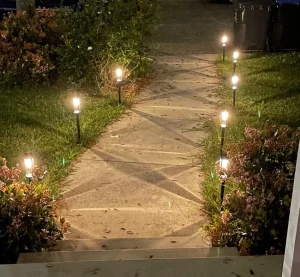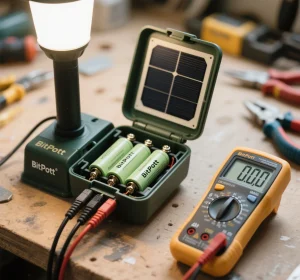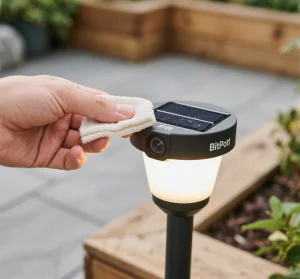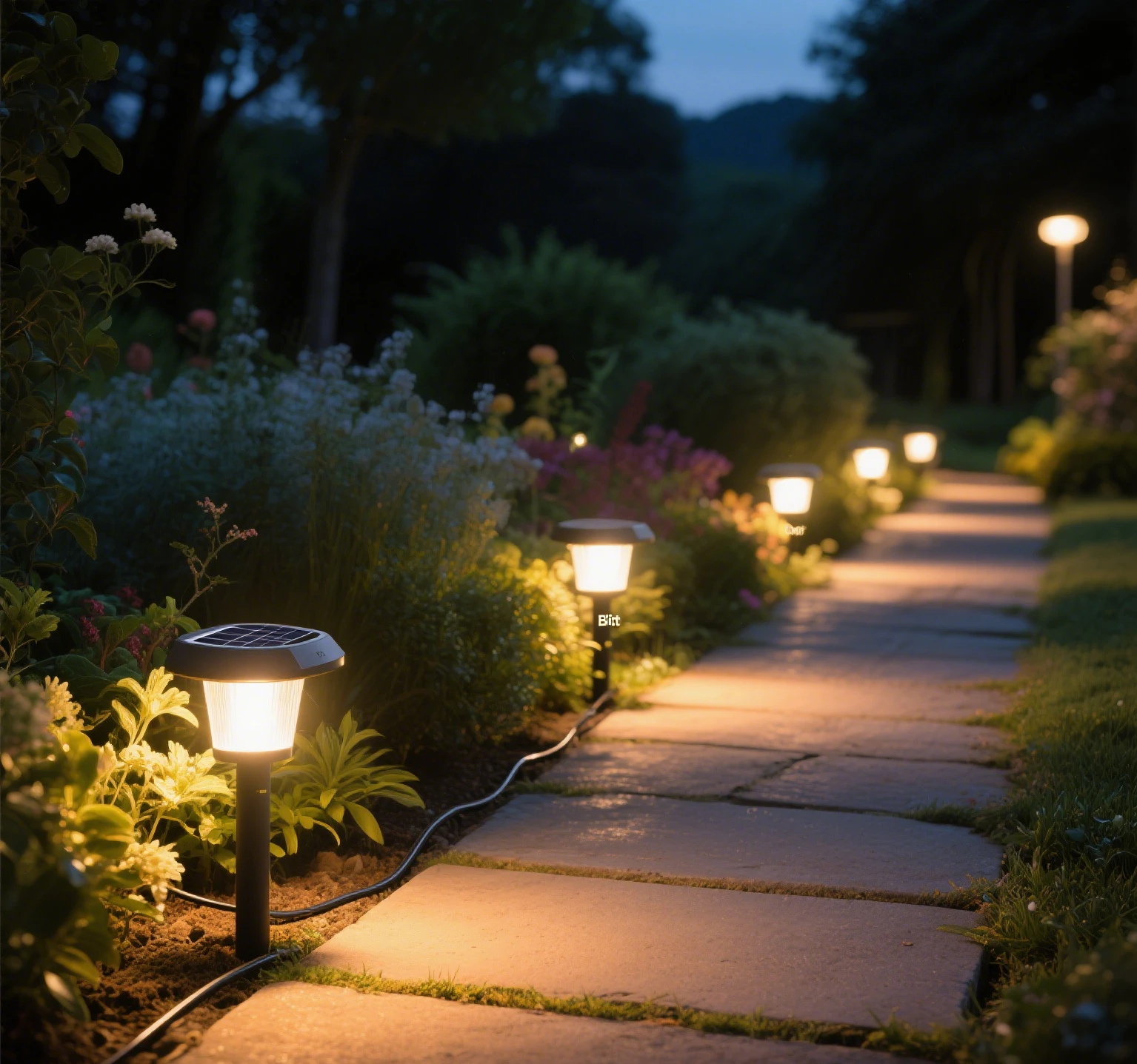On serene nights, the soft, warm glow of Bitpott solar garden lights adds unique charm to our gardens. However, like any electronic device, they can malfunction. Issues with the PIR (Passive Infrared) sensor are common. Understanding why solar garden lights fail, identifying the most vulnerable components, and learning how to repair and maintain them can help us better care for these fixtures, extending their lifespan.

Why Do Bitpott Solar Garden Lights Fail?
Environmental Factors
Solar garden lights are exposed to harsh outdoor conditions, enduring wind, rain, and extreme temperatures. Rainwater can cause circuit shorts, especially if waterproofing is compromised. High temperatures accelerate component aging, while cold reduces battery performance, lowering capacity. For instance, in scorching summers, prolonged sun exposure can overheat the light’s surface, affecting internal electronics. In freezing winters, low temperatures slow battery chemical reactions, draining power faster and destabilizing the PIR sensor’s power supply.
Component Aging
Over time, internal components age. The PIR sensor’s photosensitive elements and signal processing circuits degrade after prolonged use. Typically, after 2-3 years of frequent operation, aging becomes noticeable, reducing the sensor’s sensitivity to human infrared signals. This leads to issues like the light not turning on when it should or activating unnecessarily.
Power Supply Issues
Bitpott solar garden lights rely on solar panels to convert light into electricity, stored in batteries to power the fixture. If panels are blocked by dust or leaves or malfunction, they can’t charge the battery effectively. Low battery levels not only shorten illumination time but also impair PIR sensor performance. The sensor requires stable voltage to detect infrared signals accurately; unstable voltage can cause erratic behavior.
Where Are the Most Common Failures?
PIR Sensor Itself
The PIR sensor, a core component, detects human movement. Its sensitive elements are prone to interference from temperature, humidity, and electromagnetic signals. For example, strong electromagnetic sources, like nearby high-power appliances, can disrupt signal processing, causing misjudgments. Dust or moisture on the sensor’s lens can also reduce its detection range and sensitivity.
Connecting Wires
Wires linking the PIR sensor to the mainboard are vulnerable. Outdoor exposure can age or crack wire insulation, exposing conductors. Moisture or short circuits can disrupt signal transmission, rendering the sensor inoperative. Loose or oxidized connectors may also cause poor contact, affecting power and signal delivery.
Battery
While the battery powers the entire light, it directly impacts the PIR sensor. Degraded or damaged batteries provide unstable voltage, disrupting sensor operation. Severely depleted batteries may prevent the sensor from activating, leaving the light off despite movement. Frequent charge-discharge cycles shorten battery life, accelerating aging and affecting the sensor’s performance.
How to Repair
Inspect the PIR Sensor’s Exterior
Start by examining the PIR sensor. Check the lens for dust, moisture, or stains; clean gently with a soft cloth if needed. Inspect the sensor housing for cracks or damage, which could allow moisture or interference to affect internal components. Replace a damaged housing if necessary.

Clean Connecting Wires
Inspect wire insulation for aging or damage. If cracked, wrap with insulating tape to prevent shorts. Check connectors for looseness; reconnect firmly if needed. Use alcohol wipes to clean oxidized contacts, improving connectivity.
Test Battery Performance
Use a multimeter to measure battery voltage and capacity. If significantly below normal or capacity is low, replace with a battery matching the original specifications to ensure compatibility. During installation, verify correct polarity to avoid shorts.
Calibrate the PIR Sensor
If the sensor still malfunctions after checks, try recalibrating. Calibration varies by Bitpott model but typically involves adjusting sensitivity and delay knobs. Adjust gradually based on the environment, observing performance until optimal. For high-traffic areas, lower sensitivity and extend delay to avoid frequent triggering; for low-traffic areas, increase sensitivity and shorten delay for quick response.
How to Maintain for Longer Lifespan
Regular Cleaning
Cleaning is key to maintenance. Clean the solar panel, PIR sensor, and housing monthly. Wipe panels with a soft cloth to remove dust or debris, ensuring efficient light absorption. Keep the sensor’s lens clean and transparent to maintain detection accuracy. Cleaning the housing prevents dirt buildup, preserving aesthetics and heat dissipation.

Waterproofing
Ensure robust waterproofing. Regularly inspect rubber seals for aging or damage, replacing them if needed. Install waterproof components correctly to prevent water ingress. If the light is soaked, dry it thoroughly and test only after complete drying.
Avoid Overcharging/Discharging
Use lights wisely to prevent battery overcharging or deep discharging. In sunny conditions, allow full charging but avoid prolonged overcharging, which can occur if charging circuits fail. Avoid deep discharge; recharge when brightness dims to prevent battery damage.
Choose the Right Installation Location
Proper placement extends lifespan. Avoid areas near high-power devices or electromagnetic interference to protect the PIR sensor. Install in well-ventilated spots shielded from direct sun or heavy rain, like under eaves or on walls, to balance functionality and durability.
By understanding the causes of Bitpott solar garden light failures, pinpointing vulnerable parts, and mastering repair and maintenance techniques, we can keep PIR sensors in top condition, ensuring lasting, cozy illumination for our gardens.


Leave a Reply